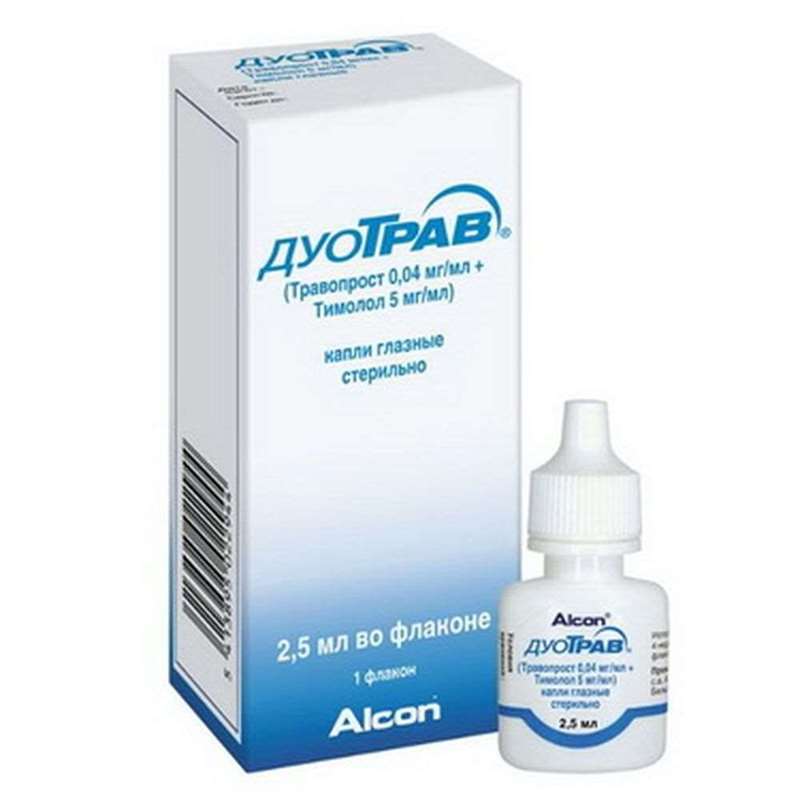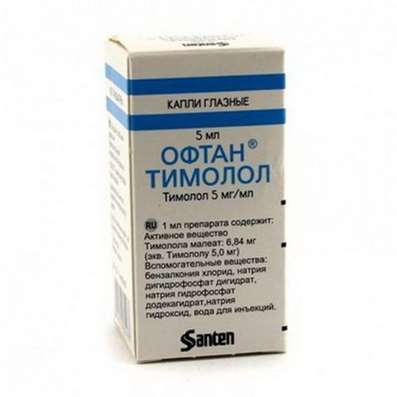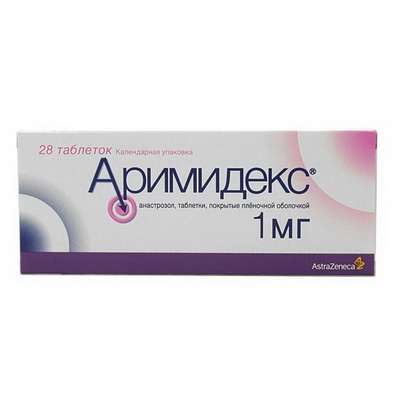Doctor Doping Shop
DuoTrav eye drops 2.5ml
USD 48.99
In stock
Be the first to review this item
DuoTrav eye drops - a combined drug for lowering intraocular pressure, used in ophthalmology locally.
Travoprost, a synthetic analogue of prostaglandin P2-alpha, is a highly selective agonist of prostaglandin FP receptors and reduces intraocular pressure by increasing the outflow of aqueous humor. The main mechanism of action of the drug is associated with an increase in out-scleral outflow. Has no significant effect on the production of aqueous humor.
Timolol is a non-selective beta-adrenergic blocker without sympathomimetic activity, does not have a direct depressive effect on the myocardium, does not have membrane-stabilizing activity. With topical application reduces intraocular pressure by reducing the formation of watery moisture and a slight increase in its outflow.
Intraocular pressure decreases approximately 2 hours after application, and the maximum effect is achieved after 12 hours. A significant decrease in intraocular pressure can persist for 24 hours after a single application of the drug.
Pharmacokinetics
Travoprost and timolol are absorbed through the cornea of the eye. In the cornea, hydrolysis of herboprost is carried out to a biologically active form - travoprost acid.
Travoprost after local application is quickly removed from the plasma for an hour - the concentration in the blood plasma drops below the detection threshold - less than 0.01 ng / ml (can vary from 0.011 ng / ml to 0.02 ng / ml).
The maximum concentration (C max) of timolol in the blood plasma is 0.692 ng / ml and is maintained to the detection threshold for 12 hours, and timaxol T max is reached within one hour after topical application.
T 1/2 of timolol is 4 hours after topical application of DuoTrava.
Travoprost is excreted as inactive metabolites mainly with bile (61%). The free acid of travoprost and its metabolites are excreted by the kidneys. Less than 2% of travoprost is found in the urine as a free acid.
Timolol and the resulting metabolites are excreted mainly by the kidneys. About 20% of timolol is excreted unchanged, the rest - in the form of metabolites.
Indications:
Decreased elevated intraocular pressure with open-angle glaucoma and intraocular hypertension in patients with beta-blockers or analogs resistant to monotherapy.
Contraindications:
- Hypersensitivity to the components of the drug.
- Bronchial asthma.
- Bronchial asthma in history.
- Severe chronic obstructive pulmonary disease.
- Hyperreactivity of the bronchi.
- Sinus bradycardia.
- Atrioventricular blockade of II-III degree.
- Decompensated chronic heart failure.
- Cardiogenic shock.
- Allergic rhinitis of severe course.
- Dystrophy of the cornea.
- Hypersensitivity to a group of beta-blockers.
- Pregnancy.
- The period of breastfeeding.
- Children under 18 years.
Carefully:
- Neovascular, closed-angle, narrow-angle glaucoma.
- Pigment and congenital glaucoma.
- Open angle glaucoma with pseudo-aphasia.
- Pseudoexfoliation glaucoma.
- Ophthalmic inflammatory diseases.
- Afakia.
- Pseudofakia with a rupture of the posterior capsule of the lens.
- Patients with a risk of developing cystoid macular edema, iritis, uveitis.
- Patients with atopy or with severe anaphylactic reactions to various allergens in a history who receive beta-blockers may be resistant to conventional doses of epinephrine in the treatment of anaphylactic reactions.
Special instructions:
Travoprost and timolol may undergo systemic absorption. Timolol with local use can cause the same side effects from the cardiovascular and respiratory systems, as well as systemic beta-blockers. It is necessary to monitor the patient's condition before and during therapy with timolol. Cases of severe respiratory and cardiovascular disorders, including death from bronchospasm in patients with bronchial asthma and death from heart failure with timolol, are described.
Beta-blockers should be used with caution in patients with a tendency to hypoglycemia or diabetes (especially with diabetes mellitus), because these drugs can mask the symptoms of acute hypoglycemia.
Beta-adrenoblockers can mask symptoms of hyperthyroidism and cause peripheral and central circulatory disorders and hypotension, as well as worsening of the condition with Prinzmetal angina pectoris.
Before the planned operation, beta-blockers should be gradually (not instantaneously!) Canceled 48 hours before the general anesthesia, tk. during general anesthesia, they can reduce the sensitivity of the myocardium to sympathetic stimulation necessary for the work of the heart.
Do not touch the tip of the dropper bottle to any surface to avoid contamination of the dropper and its contents. The bottle must be closed after each use.
Local action
Travoprost can cause a gradual change in eye color by increasing the amount of brown pigment in melanocytes. Before starting treatment, patients should be informed about the possibility of changing eye color. Treatment of only one eye can lead to permanent heterochromia. Long-term effects on melanocytes and the effects of this effect are currently unknown. The change in the color of the iris of the eyes is slow and may go unnoticed for a number of months or years.
This effect is revealed mainly in patients with mixed iris coloration, for example, blue-brown, gray-brown, green-brown or yellow-brown; However, it can also be observed in patients with brown eyes. Typically, brown pigmentation spreads concentrically around the pupil to the periphery of the iris of the eyes, while the entire iris or parts of it can acquire a more intense brown color. After the drug was discontinued, there was no further increase in the amount of brown pigment, but the already developed color change may be irreversible.
The drug can cause darkening, thickening and lengthening of eyelashes or an increase in their number; rarely - darkening of the skin of the eyelids. The mechanism of these changes is not currently established. The drug contains a preservative of benzalkonium chloride, which can be absorbed by contact lenses. Before using the drug, the lens should be removed and installed back no earlier than 15 minutes after the drug is used.
Impact on the ability to drive vehicles and manage mechanisms
If the patient after the application of the drug temporarily reduces clearness of vision, it is not recommended to drive the car and engage in activities requiring increased attention before its restoration.
Suggested Use:
The drug is instilled in 1 drop in the conjunctival sac of the eye 1 time per day, in the evening or in the morning at the same time.
To reduce the risk of developing systemic side effects, it is recommended after the instillation of the drug to squeeze the nasolacrimal canal by pressing in the area of its projection at the inner corner of the eye.
If the dose has been missed, the treatment should be continued with the next dose. The daily dose of the drug should not exceed 1 drop in the conjunctival sac of the eye 1 time per day.
Packaging:
- Comes in original packaging. Item is brand new and unopened.
Storage:
- Keep away from direct sunlight.
- Keep locked and away from children.
- Store in dry place at room temperature.
- Do not exceed storage temperature higher than 25 C
Important notice- the outer box design may vary before prior notice!

Related products


 Cart
Cart



